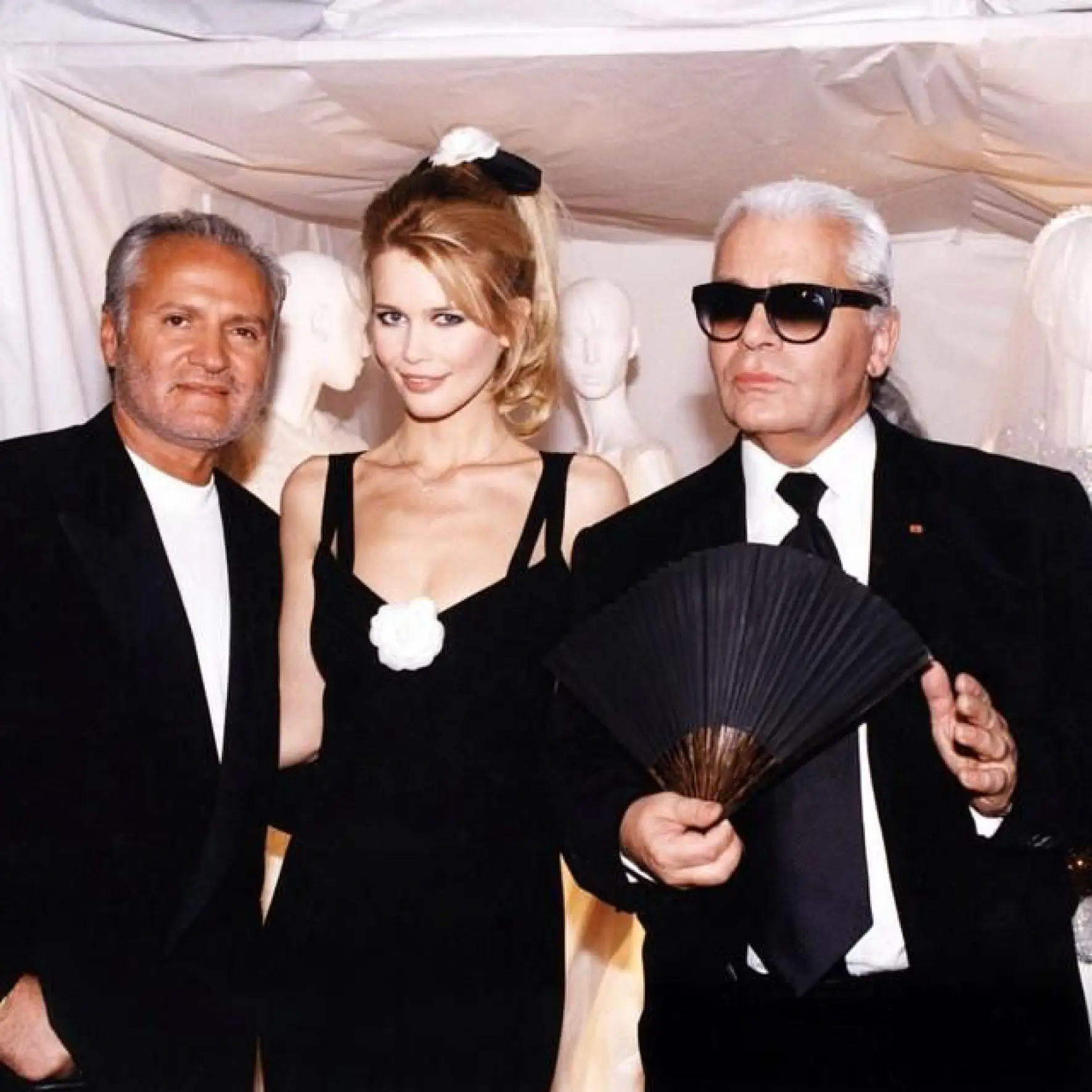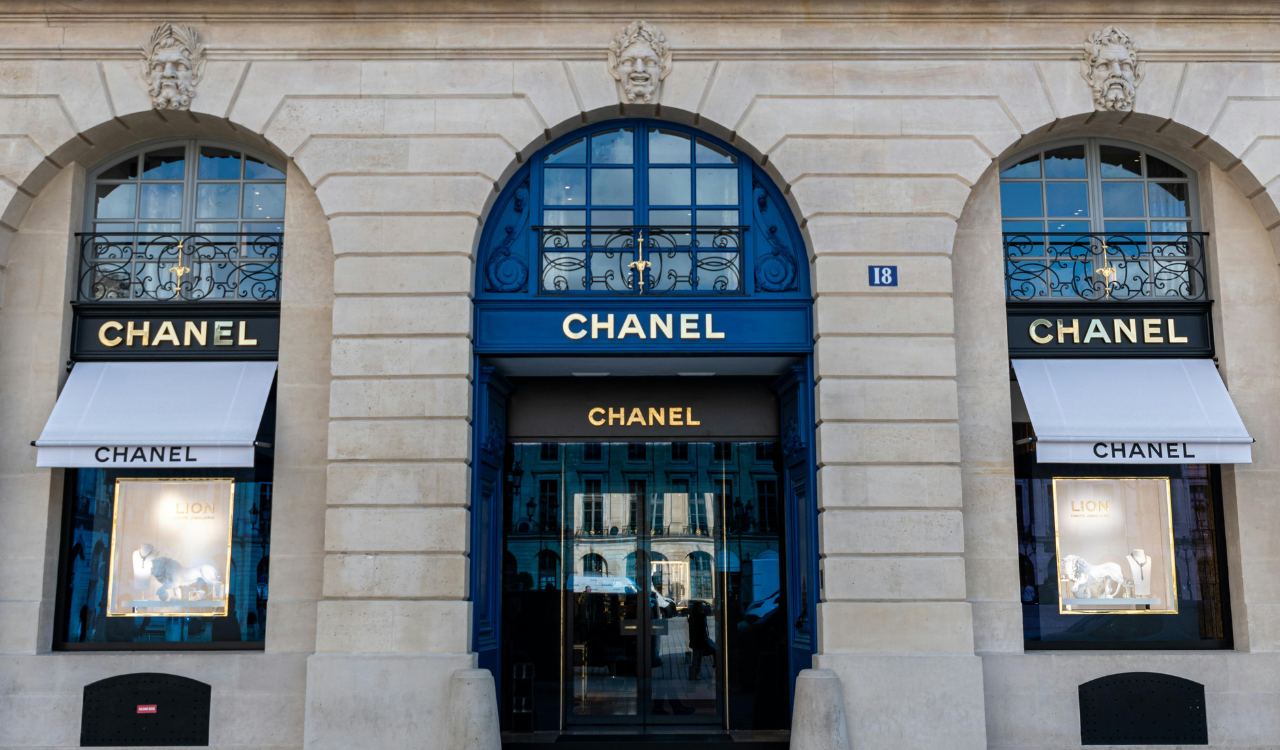Karl Lagerfeld was the smartest and most broadly self-educated of the Greatest Generation of Designers. He was extremely articulate and entertaining. Karl was also by far the most eccentric member of that august group. He dressed, and for the most part, lived with one foot in the eighteenth century. His fashion genius, however, was predicated on his ability to stay up to date, if not a little bit ahead of the very latest trends.
Flying Solo
Lagerfeld built the foundation of his fashion empire by himself without a business partner. He was without question the most prolific designer. Karl annually designed up to eight ready-to-wear collections, plus two haute couture collections every year since 1984 until he died. These included Chanel, couture and ready-to-wear, as well as Fendi’s ready-to-wear and fur collections, and his own namesake Karl Lagerfeld lines. He also did much of the principal advertising photography for many of his collections.
“I’m never totally pleased; I am a fashion nymphomaniac who never gets an orgasm.” Karl Lagerfeld. “I don’t believe in good taste.” Gianni Versace
Karl was very public relations oriented. He worked overtime to accommodate his availability to the fashion press. There were times when he had three dinners in a row on the same night to keep all the fashion editors happy.
Personal Style
I have long noticed that many designers often wear virtually the same style most, if not all, of the time. It makes sense, as they are among the most visual people and they know what makes them look the best. They often carry this look over into their homes and offices. Karl felt most comfortable as an eighteenth-century aristocrat. He styled himself and his homes with a big dose of that in mind. Powder-white hair in a ponytail, high shirt collar … and always gloves. In later years he always wore sunglasses, even inside, and at age 84 he grew a beard. His homes were opulent, some even close to being eighteenth-century period pieces.
My wife, Linda, and I were having dinner with him in one of his Paris manses. After climbing a very wide, long staircase lit with candles on each side, we entered a large reception hall. In the middle of the room was an upholstered couch that was about five feet off the ground with a small, moveable staircase. Karl informed us it was his eighteenth-century receiving bed. In front of the bed was a grouping of small, straight chairs. While reposing on the bed, he could look down upon his guests.
Maintaining Chanel
Karl had been fascinated by Chanel since the early 1970s. Chanel was perfect for Karl, and Karl was perfect for Chanel. He was a designer who kept pace with what was happening “right now” in fashion. He read every fashion magazine, kept up with the latest film and music trends, and surrounded himself with a constantly shifting inner group of young fashion sophisticates and creative artists. Lagerfeld was a human sponge. When he finished getting everything out of his associates, he dropped them and moved on. This was exactly what the House of Chanel needed, a designer who could keep the line up to date and fresh while keeping the soul of Coco alive.
Prior to Chanel, Karl was sometimes prone to fashion complexities and too broad a focus in his designs. I remember being on a fashion shoot in Paris for one of his earlier Chloe Collections. The clothes were complex, and it often took the models a while to figure out how to get into them. The Chanel style map provided a focused fashion track for Karl to follow. Chanel also gave him the supernatural inspiration he needed. He once told me his fortuneteller said, “You will be inspired by a short, dark-haired woman.” That woman turned out to be Chanel. He explained to me, “I had no choice. I had to take the job.”
When he arrived at Chanel in1982, he was pleasantly surprised to discover that he possessed the Chanel archives. He had the ability to keep the Coco Chanel flavor while enticing women to try new ideas. For example, he copied the Karl Lagerfeld biker-themed collection to mix in some leather and lace at Chanel.
The Gay Life
Like virtually everything else in his life, Lagerfeld had an unusual love life. He had a two-decade relationship with Jacques de Bascher. Jacques was handsome, full of charm, and the sex star of the period’s gay culture. Karl supported his extremely glamorous and decadent lifestyle. He said, “He who has the money pays. I love that boy but have no physical contact with him.”
Karl was one of the few gay celebrities that Jacque did not have a physical relationship with. In the early 1970s, while still being supported by Karl, Jacques had a sexual relationship with Yves Saint Laurent. Prior to this, Karl and Yves were good friends. Karl blames Pierre Berge, YSL’s partner, for breaking up the friendship. Berge accused Karl of pushing Jacques into the affair to destabilize the House of Saint Laurent.
Karl lived vicariously through Jacque’s many sexual adventures. He was drawn to Bascher’s decadence. “I am a Calvinist myself. I found Jacques’s adventures amusing. He would tell me what he did, but I wouldn’t ask questions.” Bascher died of AIDS in 1989 with Karl by his bedside.
Chanel Transcendent
Lagerfeld’s most brilliant accomplishment was to bring the Chanel fashion empire back to life. He had a contract with Chanel to design its haute couture and ready-to-wear collections. He received tremendous support from Alain Wertheimer, grandson of Pierre Wertheimer, the founder of the family company, Bourjois.
Bourjois was the largest cosmetic and fragrance company in France in the 1920s. Coco Chanel had made an agreement in 1924 with Pierre to form a new company, Perfumes Chanel, which produced Chanel Number 5. Wertheimer had a controlling 70 percent ownership in the new corporation. Coco regretted the sale of her company and during the Second World War attempted to regain ownership when the Nazis took over. The Wertheimers left France for the United States and protected their ownership. Alain took over running the company from his father in 1974. Over the next decade, he built a new foundation for Chanel and in 1984 hired Lagerfeld to design the collections. Karl told me his agreement to be the designer of The House of Chanel required only one page. At first, it was to do the Chanel Haute Couture line, but after two seasons he also took over ready to wear.
Media Savvy
Karl gave interviews to the press nonstop. He was very good with one-liners and didn’t hesitate to share them. Some provocative ones are worth sharing.
- “If I were a Russian, I would be a lesbian because Russian men are so ugly.”
- “I would kill myself rather than spend time with today’s new fashion names.”
- “Forget the good old days, they just make the present look secondhand.”
- “What I hate most is selfies, it’s like talking to yourself.”
- “I don’t like standard beauty. There is no beauty without strangeness.”
- “A woman is never overdressed or underdressed in a little black dress.”
Gianni Versace
A popular phrase in Milan fashion circles during the 1980s was: “Armani dresses the wives and Versace dresses the mistresses.” While this was surely an oversimplification, no two designers produced more dissimilar fashions than Versace and Armani. If Armani loved simple, Versace boarded on ostentation. Gianni’s designs were inspired, he said, “by Italian hookers.”
Versace’s earlier collections were fun to watch because they were major theatrical productions, featuring the latest music, top supermodels, and flamboyant clothes. He was, in fact, one of the first, if not the first, designer to use supermodels on the runway, and he also invited celebrities to sit in the front row at his collections. They were high-spirited extravaganzas. Tapes of the music from his shows became an additional source of income. No matter how unwearable the collection was, you left the show on a high. I remember covering one of his very earliest collections and writing in Women’s Wear Daily, “It’s a good thing we live in the age of the automobile, because his collection surely would have frightened the horses.”
Over-the-Top
Gianni’s early collections got a lot of attention and he acquired an almost cult following. What he was designing was new and certainly exciting. Versace had a great talent. His dramatic looks were a hit with the nightclub scene and great in fashion magazine pages. They photographed well. Once he calmed down his over-the-top costume-influenced designs, he began to acquire a broader audience. His clothes became much more wearable, and sales took off. He found his customer among confident women who wanted to attract attention and didn’t mind colorful designs with more than a hint of sexiness.
Family Matters
Versace was born and grew up in Calabria. It is a sparsely populated region of the country, mostly mountainous, and is said to be home to the largest mafia organization in the world. In 1978 Gianni, with the help of his older, business-educated brother, Santo, founded Versace S.p.A. Gianni relied heavily on his family. Santo was president and his sister, Donatella, was vice president with creative oversight under Gianni. Donatella’s husband, Paul Beck, was also named menswear director. Santo led the licensing efforts and made sure Gianni retained creative control of each product line. Over the next ten years, they opened 100 boutiques worldwide. Donatella oversaw the brand’s image.
Gianni chose Medusa as the symbol of his company. He first saw her head in the Roman ruins where he played as a kid. The reason he chose her image was mythological Medusa made people fall in love with her and they had no way to escape her power. He hoped the same would happen with his fashions.
Living Large
With hundreds of millions of dollars to spend, Gianni set his sights on Miami. He brought two adjacent properties in South Beach for less than $7 million. The redesigned mansion was named Casa Casuarina and he spent $33 million to rebuild it. I visited his mansion in Milan and his house in Lake Como; both were elegant in superb, understated taste. It was difficult to believe the man who owned these homes was the same one who designed the flamboyant fashion collections.
There is, however, no doubt that the South Beach, Miami home was the real, over-the-top Versace. He loved to spend and entertain lavishly. His very close friends Elton John and Madonna were regular visitors. Gianni became the center of South Beach’s café society. He was also an active participant in its more adventuresome, decadent underbelly.
Family Feud
In 1993, he was diagnosed with a rare inner-ear cancer. He spent two years recovering. During this period, Donatella oversaw the design team. When Gianni returned, she resented giving up the creative power. They had what has been described as epic fights and they wouldn’t speak to each other for months at a time.
Finally, in early 1997 Gianni had had enough. He decided to get the family out of the business and began to meet with Morgan Stanley bankers in New York to take the company public. Then the unthinkable happened.
On July 15, 1997, Gianni Versace, just fifty years old, was shot dead in front of his palatial home in Miami, Florida. The murderer, a spree killer, twenty-seven-year-old Andrew Cunanan, committed suicide eight days later. He had met Gianni once briefly in San Francisco several years earlier. The murder threw the Gianni Versace Company into a tailspin. Donatella was immediately named creative director and Santo was named CEO. Donatella was heavily using cocaine and making irrational decisions. Within ten years, the company’s sales went from nearly a billion dollars to around $400,000 and was losing money.
Close family friend, Billy Joel, staged an intervention, and Donatella’s rehab was a success. Santos was replaced by what turned out to become a succession of outside the family CEOs. Donatella continued as chief creative officer and the company began to grow in revenues and return to profitability.
Gianni left all his shares of his company to his favorite niece, Donatella’s daughter Allegra. She was eleven years old in 1997 when he died. At age eighteen, she received all of Gianni’s shares, amounting to ownership of half the company. Santo owned 30 percent of the shares and Donatella owned the other 20 percent. Allegra has shown moderate interest in the company, serving on the board of directors, and following its activities. She has not, as Gianni had wished, shown any desire to take over and run it.
Shape Shifter
Gianni had an enhanced ability to seamlessly change his persona depending on to whom he was speaking. He could shape shift his position, almost like a magician. He could appear to be a buttoned-up businessman, a creative designer, or a spontaneous playboy. Actually, he was all three. Gianni was extremely charming and always available. WWD could write a scathing negative review and he would invite me to lunch the next day and not mention it.
Versace was wildly creative. He was not influenced by other designers. All his designs were original. I never witnessed any of the allegedly loud and vicious battles he had with his sister and others. He always told me that Donatella was a talented designer.
He lived comfortably in his three worlds. I was only allowed into the sophisticated, cultured, gentlemanly world. When Donatella took over the creative side, Gianni’s incredible personality was a major loss to the Versace brand. Gianni was right however about Donatella having great talent as a designer, and that talent brought the company back to vigorous growth and profitability.
The fifth installment of Fashion Madness will appear soon. In the meantime, order your ebook on Amazon.




